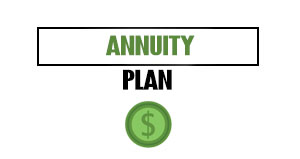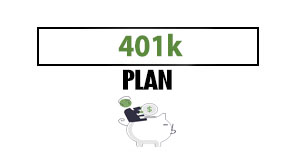Now that you have everything else in order it’s time to come to one of the most important parts of being a freelance designers; getting paid and managing your money efficiently. After all, if you don’t get paid for your services and budget your income, how can you expect to maintain a positive cash flow?
Submit a Clear Proposal
You’ve determined how much to charge and they’ve agreed to the rate, now you have to submit a clear proposal to the client – which should have also been shared in the contract.
Not only will the proposal include your rate, it will also contain the following elements:
- The amount of your upfront payment; this will vary depending on the size of the project, but you can request anywhere from a 30% to 100% deposit.
- Provide an estimate of the time you expect the project to be completed.
- List the types of payments that you accept, such as check, credit card, or electronic. The more flexible payment options you accept, the faster you’ll receive your payment.
- Inform the client of late fees you charge for invoices paid late.
- Offer the client a discount if they bill the invoice before the due date.
- Decide if you will hand over the work before or after receiving payment. To protect yourself, consider holding on to work until you’re paid in full.
As mentioned earlier, it’s important to stay in frequent contact with your client. You have to make changes on the agreed terms, such as the deadline because your computer crashed. If they are aware of this information, they won’t hesitate to pay you when they receive the invoice because they were aware of the delay in advance.
Invoicing Basics
Prior to sending out your invoice, you should be aware of the most important components of an invoice so that all of the required information is clearly in front of the client. By doing so, you’ll prevent any delays in the payment process.
Date – This will be the date of when the invoice was sent. You should also include the due date at the bottom which is typically 30, 60, or 90 days after receiving the invoice.
Amount – Although your client already knows how much money the project is going to cost, this could change if you’re billing hourly or if there was any additional work or charges, the invoice also needs to include the final project price.
Invoice Number – When you include an invoice number it makes it easier to track and organize your invoices. Also, an invoice number could be used when it’s time to file your taxes or if you get audited.
Contact Details – Always include the name, address, and contact information (phone number, email address) for both you and your client. This not only adds a sense of professionalism, it also helps your client easily find your contact information in case there are any questions regarding your invoice.
Description of Work – You can avoid any misunderstandings or surprises by detailing the exact work that you did for the client. For example, you could have an itemized breakdown of the services that you performed for the client throughout the project. Instead of simply billing a client for “Building a Website,” you would write “Built 10 Pages of HTML Design”.
Use Invoicing Software
Instead of spending time on creating an invoice from scratch, you can use software like Due.com. After creating an account, you can enter your information and your client’s information so that you can create a bill in just a matter of minutes. Not only will you save time, these invoices have a professional appearance and come with customized features that allow you to add things like your logo.
Another benefit of using invoicing software is that it will integrate with popular third-party payment gateways like PayPal.
And, if you have recurring clients, you can automate your billing. So if you have a client who pays who $500 per month, the software will automatically charge that client’s credit card or bank account. This is a great way to guarantee payments and budget accordingly.
Invoice Promptly and Frequently
Unless you’ve agreed to a term like automatic payments, you’ll need to send out your invoice immediately after the completion of project. Why? Because the sooner you send out an invoice to a client, the sooner you’ll get paid. This also prevents you from forgetting to send out an invoice while getting consumed by a new product.
Follow Up
Don’t hesitate to send out a polite reminder to a client if the invoice date is approaching. This will avoid you from hunting the client down if they haven’t paid or hitting them with late fee because the invoice is now past due. Maybe the client was out of town and couldn’t pay the invoice, so they appreciated the fact that you reached out to them before they went away.
Make Your Invoices Unique
You’re a graphic designer, which means that you possess the skills to create a one-of-a-kind invoice. This is a great way to also showcase your skills and establish your brand’s voice. For example, you could create an invoice that has a binary code. This reminds that client how talented you are and makes it stand out from all of the other invoices they receive. If you don’t have the time to create an invoice you could use invoicing software that was already mentioned, like Due.com. You should be able to find a template that fits your brand while adding a personalized touch by including your logo or name in a cool font.
Managing Your Money
Invoicing is just one part of maintaining a positive cash flow. You also need to manage your income by doing the following:
- Know how much you’re bringing in each month so that you can effectively budget your income.
- Keep track of your spending – you may realize you spent too much at the grocery store or that you need to cut back on electricity usage.
- Always remember to put your needs before your wants.
- You’re responsible for paying your own taxes, so make sure that you set aside that money and pay quarterly. Around 30% is usually a safe bet, but you should talk to an accountant.
- Have an emergency fund – you may have an unforeseen cost, like replacing your computer. Also, as a freelancer, there may be times when the work has dried up and you need money to pay the bills.



